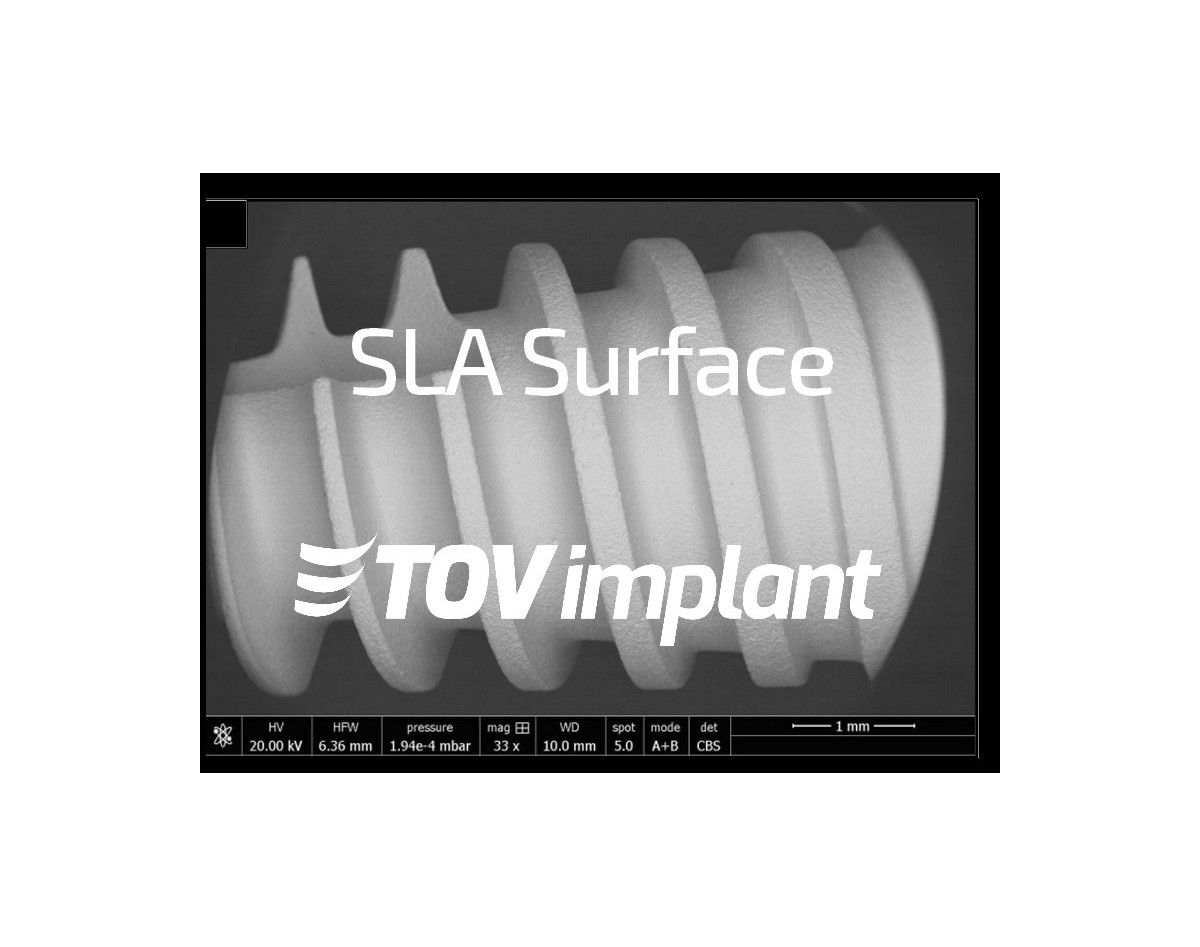SLA Surface Treatment of Implants: An Excellence Solution by TOV Implant

SLA Surface Treatment of Implants: An Excellence Solution by TOV Implant
Surface treatment of dental implants is crucial for their clinical success. Among the most recognized and effective methods, the SLA (Sandblasted, Large-grit, Acid-etched) surface treatment stands out for its ability to enhance the fixation and osseointegration of implants. TOV Implant, committed to innovation and quality, uses this technique to ensure optimal results.
What is SLA Surface Treatment?
The SLA surface treatment consists of two main steps:
- Sandblasting with Large Grit: This step involves using large aluminum oxide particles to sandblast the implant surface, creating micro-roughness.
- Acid Etching: The implant is then treated with an acid solution, typically a combination of hydrochloric acid and sulfuric acid, to generate a microscopic topography on the already micro-rough surface.
This dual treatment creates an ideal surface for osseointegration, enhancing primary stability and facilitating the biological connection between the bone and the implant.
Advantages of SLA Surface Treatment
1. Enhanced Osseointegration
Several studies have shown that the SLA surface promotes better osseointegration compared to smooth surfaces or other surface treatments. The micro and nano-roughness of the SLA surface increases cell adhesion and bone formation around the implant.
2. Superior Primary Stability
The roughness of the SLA surface allows for better mechanical interlocking with the bone, thereby increasing the primary stability of the implant. This stability is essential for the long-term success of implants as it reduces the risk of micromovements and early failures.
3. Reduced Healing Time
Implants with an SLA surface often show a shorter healing period. The optimized surface topography allows bone cells to colonize the implant more quickly, thus accelerating the healing process and enabling earlier loading.
TOV Implant and SLA Technology
TOV Implant uses SLA surface treatment for its implants, ensuring superior performance and clinical reliability. TOV implants treated with this method offer better bone integration and greater stability, meeting the needs of practitioners and patients.
SLA Process at TOV Implant
- Sandblasting: Implants are blasted with large particles to create a uniform rough surface.
- Acid Etching: Implants are then etched with a special acid solution, refining the micro-topography of the surface.
This unique combination ensures an ideal surface for bone growth, thus increasing the success rates of dental implants.
References
- Buser, D., et al. (2004). "Influence of surface characteristics on bone integration of titanium implants. A histomorphometric study in miniature pigs." Journal of Biomedical Materials Research.
- Cochran, D. L., et al. (1998). "Bone response to unloaded and loaded titanium implants with a sandblasted and acid-etched surface: a histometric study in the canine mandible." Journal of Biomedical Materials Research.
- Lang, N. P., et al. (2004). "Early osseointegration to hydrophilic and hydrophobic implant surfaces in humans." Clinical Oral Implants Research.
- Albrektsson, T., & Wennerberg, A. (2004). "Oral implant surfaces: Part 1—review focusing on topographic and chemical properties of different surfaces and in vivo responses to them." International Journal of Prosthodontics.
Conclusion
The SLA surface treatment, as used by TOV Implant, represents a major advancement in the field of dental implantology. By enhancing osseointegration, primary stability, and reducing healing time, this technique offers significant clinical advantages. Practitioners can thus provide the highest quality care with lasting results for their patients.

Comments
No comment at this time!
Leave your comment